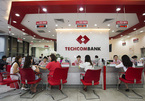 |
|
|
“This, along with a favorable credit cycle, should lead to significant multi-year returns, in our view,” according to J.P. Morgan's latest Asia Pacific Equity Research report.
Further, the report noted that high visibility on nominal gross domestic product (GDP), and current account surplus in its forecast horizon, allows for extrapolation of strong earnings and credit growth in Vietnam.
“Yet, 104% bank loans/GDP is high for US$2,500 GDP/capita, which should likely constrain growth after the next few years,” J.P. Morgan warned.
The bank predicted a case for consistent mid-teens growth in loans in Vietnam for the next two to three years, supported by a strong nominal GDP.
This continues the historical trend of a 16% compound annual growth rate (CAGR) in the last five years on 9% nominal GDP CAGR over the same period. Loans have more than doubled to VND7.4 trillion in 2018, from VND3.5 trillion in 2013.
In terms of sector, loan growth in the last five years saw the fastest growth in trade (18% CAGR), construction (15%) and others (21%), which includes loans to individuals.
“The overall loan mix has shifted in favor of others and trade, with loans to industrials now accounting for 20% of the total, from 29% in 2012,” said the report.
J.P. Morgan expected some local banks under its coverage, namely Vietcombank, Techcombank, Asia Commercial Bank and VP Bank, to deliver 15-21% returns on equity (RoE) over the next two years, as they have started making money on both sides of the balance sheet.
“Controlled credit growth has allowed pricing power to banks, with 9% nominal GDP driving credit demand,” according to the U.S. organization.
Vietnamese banks have relatively high loan-to-deposit rates at 94%. However, the growth in loans is supported by growth in liquidity, as loan growth was only slightly faster than deposit growth at 17% CAGR, versus 15% CAGR in the past five years.
J.P. Morgan noted that Vietnam has the fastest money supply growth in the region at 10% year-on-year, as of the second quarter of 2019, down from 18% average growth rate in the prior five years.
BoP surplus supports money supply
The banking sector’s growth in liquidity is supported by the country’s balance of payments (BoP) surplus. Vietnam has one of the highest BoP/GDP across Asia at 3% of GDP versus 0% for peers, according to the report.
This is driven by a robust current account surplus over the last five years, as well as capital account inflows. Foreign direct investment (FDI) has been a large contributor of capital inflows, along with capital attracted by government divestments in State-owned enterprises.
J.P. Morgan expected BoP to continue receiving support this year, given the strong FDI pipeline and supportive portfolio flows, among others.
Vietnam recorded a current account surplus of 2.8% of GDP, or US$1.7 billion in fiscal year 2018. “Since 2012, Vietnam has maintained a current account surplus, and net exports became a major driver of GDP growth. FDI inflows have also improved in recent years,” said the report.
Trade is a major component of Vietnam’s GDP. Gross trade is at 200% of GDP, and imports for processing and re-exports form a large part of Vietnam’s trade. Hence, net exports account for around 2.8% of GDP.
“This is lower than other export driven economies, like Korea and Taiwan, but has been a driver of growth over the past couple of years,” said the report.
Risks to investments in banks
J.P. Morgan has pointed out a number of key risks related to investments in Vietnamese banks.
The U.S. credit rating agency Moody’s placed Vietnam’s Ba3 local and foreign currency issuer rating under review for a downgrade in October this year, due to delayed payments on a government obligation.
Following this, Moody’s also put 17 banks’ ratings under review for downgrade, including the four aforesaid banks. The agency noted that the review was due to the sovereign rating, and not due to a weakening of the banks’ credit strength.
J.P. Morgan warned that any downgrade would likely be negative for stocks of lenders. “The possible downgrade does not reflect capital position and credit strength of banks,” it noted.
Foreign exchange depreciation could lower U.S. dollar returns for investors, which is also a major risk.
Since 2012, the trade balance improved as companies ramped up production in Vietnam. However, despite the trade and current account surplus, the Vietnamese dong continued to depreciate at a modest pace of 1.5% CAGR in the last five years.
Also, Vietnam is currently part of the U.S. Treasury monitoring list for currency manipulators, and a sharp shift in current account and balance of payment surplus can lead to a tightening of liquidity and derail self-sustaining credit growth. SGT
Thanh Thom

Banks in Vietnam see decline in foreign exchange trading results
Q3 finance reports show that a series of banks had unsatisfactory results in foreign exchange trading or took losses.

VN banks offering more and more free deals
This is a far cry from two years ago, when charges were placed on electronic services in a bid to increase bank revenue.
 Vietnamese banks offer an increasingly rare combination of high and self-sustaining earnings growth, said United States-based investment bank J.P. Morgan.
Vietnamese banks offer an increasingly rare combination of high and self-sustaining earnings growth, said United States-based investment bank J.P. Morgan.